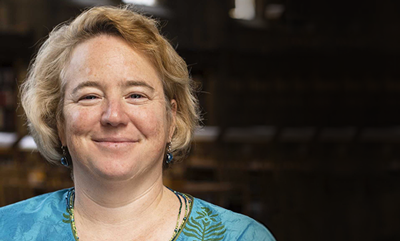‘A Visible Sign of Inequality and Injustice’.
 A recent US Department of Housing and Urban Development report estimated that on any given night in 2017, 553,742 people experienced homelessness in the country, and about 35 percent of that population was living on the streets.
A recent US Department of Housing and Urban Development report estimated that on any given night in 2017, 553,742 people experienced homelessness in the country, and about 35 percent of that population was living on the streets.
While the size of this population has declined slightly over the past several years, homelessness is still a persistent public health problem–and one that leads to, or exacerbates, health challenges such as substance misuse, mental health conditions, chronic and infectious diseases, and violence.
On Wednesday, January 30, the School of Public Health will host the Public Health Forum “Breaking the Cycle of Homelessness and Poor Health: How Can Public Health Be Part of the Solution?” featuring Hilary Godwin, dean and professor of environmental and occupational health sciences at the University of Washington School of Public Health.
“My reason for talking about homelessness is not that I am an expert in the matter, but rather that I think it’s important that we have these conversations,” Godwin says. “It is a critical issue, and a really visible sign of inequality and injustice that we cannot ignore.”
Ahead of the forum, Godwin spoke more about the health challenges and barriers associated with homelessness, as well as the state of homelessness in the Seattle area, and how UW has begun to address it.
In addition to Seattle, you’ve lived in other major cities, such as Baltimore, Chicago, and Los Angeles. Were there discernible differences among the homelessness situation in these cities?
In Los Angeles, the upstream determinants among the homeless population were very similar to other cities—lack of access to affordable housing, income inequality, job instability, lack of support for behavioral and mental health. In the UCLA area, there was a significant population of homeless veterans, because the university is located near the VA. This particularly highlighted for us that we need to do more to support the people who have served our country.
The reality of life for someone who is unsheltered—not having access to running water and plumbing and sanitation—are things that we normally think of as being problems in low-income countries, not problems here. In Seattle, we live in a city with incredible growth and prosperity, yet there are so many individuals who are really, really struggling to get their most basic needs met. It’s an ethical human health issue, and it really brings to light that we need to address critical issues on a societal level, and focus on upstream determinants of health, including poverty, inequity, and injustice.
Oftentimes, people aren’t sure what to do when they encounter a homeless person—some people offer them money, and others ignore them out of fear or helplessness. What is one thing the average person in any city or town can do to help combat homelessness?
One of the things that the students and I have talked about here at UW is that exhibiting empathy and kindness can go a long way. It may not be doing anything to “solve” the upstream problems, but it respects the human dignity of the individual. Even something as simple as saying “good morning,” or smiling at someone is an important step towards us, as a community, demonstrating empathy for our fellow human beings.
Another thing we’ve been talking a lot about here is celebrating the successes of the important community-based organizations that are making a difference. We have some amazing nonprofit organizations that are doing innovative work and are really on the front lines with this. They’ve partnered with different groups to do assessments, and what they’re doing is evidence-based and effective.
If we only talk about homelessness as a problem, it makes it seem as if we don’t know what to do—but we do know what to do in many cases. What we’re lacking in many cities is coherent organized implementation plans from some local governments, and the resources with which to implement those plans. Supporting the people who are doing the right thing already, and acknowledging the humanity of the people who are dealing with these problems, are two important things people can do. They’re things that people forget are completely within their control and would make a huge difference.
As a professor and dean, have you observed the extent to which homelessness affects the college student population, and how UW and other schools can best address this issue?
That’s something that we need to work on at UW, and I suspect on many other college campuses as well. It can be challenging with student populations to figure out which students are experiencing basic needs insecurities. It’s really astounding that the rates of food insecurity among college students across the country tend to be much higher than they are among the general population. Public institutions are now broadening access to higher education—in particular, higher education that is accessible to students from socioeconomic disadvantaged backgrounds—and then forgetting that there are systems that need to be put into place to make sure those students are supported once they’re here, so that they can reach their full potential.
Another population with a high prevalence of homelessness is community college students. But the data is not great. Similar to food insecurity, the available data is from 5 or 10 year ago. Figuring out ways to identify who these students are, and then do something about it, is absolutely critical.
Comments & Discussion
Boston University moderates comments to facilitate an informed, substantive, civil conversation. Abusive, profane, self-promotional, misleading, incoherent or off-topic comments will be rejected. Moderators are staffed during regular business hours (EST) and can only accept comments written in English. Statistics or facts must include a citation or a link to the citation.